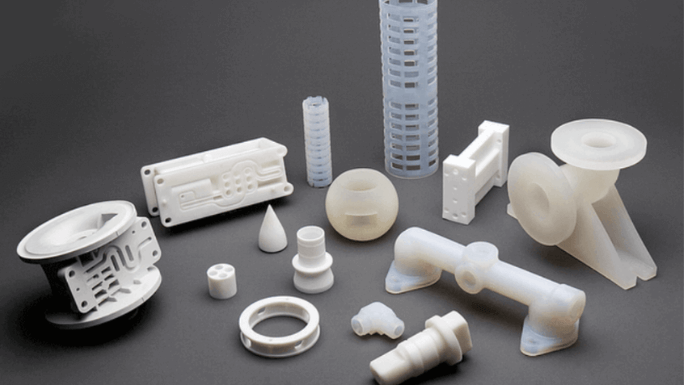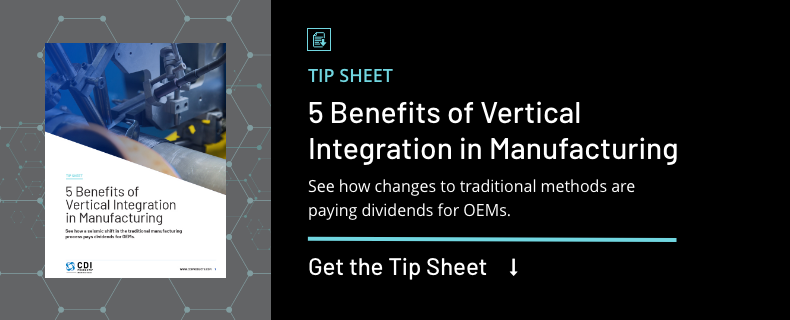
4 Types of Molding Processes in Rubber and Plastics Manufacturing
Posted by CDI Products on Jul 22, 2021
The manufacturing of polymer products involves several distinct processes, each with specific benefits and applications. Despite the increasing popularity of additive manufacturing (commonly referred to as 3D printing), most rubber and plastic parts are manufactured using traditional molding processes.
This blog post is designed to help you understand how leveraging the different types of molding processes produces durable, high-quality rubber and plastic components for the unique demands of your next project. After briefly defining the molding process, we’ll break down the advantages and applications of four different types.
What Is Molding?
Molding is one of the five core processes involved in rubber and plastic manufacturing, alongside casting, forming, machining, and additive manufacturing. Though they share some similarities, the processes are quite different.
A molding process uses pressure and heat to fill the cavity of a mold, a rigid frame also known as a matrix. The raw material, typically a pliable one like plastic, glass, or ceramic, is kept under pressure until it solidifies or vulcanizes (i.e., begins to harden). Advantages of molding include greater accuracy, versatility, and efficiency.
Molding is different from casting, which is when a liquid or melted polymer is poured into a mold and solidifies to form the part. No pressure other than gravity is used to fill the mold and form the part. The advantages of casting include durability and a greater complexity of design – however, it may not be possible to cast large parts.
4 Types of Molding Processes: Applications and Advantages
Molding serves a wide range of industries and offers exceptional quality, sustainability, and adaptability of parts. Understanding the types of molding processes can be pivotal in ensuring the success of your next project. Here are some of their main applications and advantages.
1) Compression Molding
The compression molding process is used to make rubber and plastic parts. In the rubber compression molding process, a preformed section of rubber is placed in a heated mold, then the mold is closed and held under pressure until the rubber takes the shape of the cavity and vulcanizes. Vacuum-assisted compression molding is similar but placed under vacuum to remove any gases and ensure the best possible mold filling and shape adherence.
Compression molding offers several benefits over other molding processes, including low tooling costs and fast lead times. However, the process requires manual handling of the mold and products, resulting in slower cycle times.
2) Melt Molding
When applied to thermoplastic materials, compression molding is referred to as melt molding. For this fabrication technique, the polymers are heated above their melting point, so they can assume a liquid form.
The resulting polymer is then allowed to cool and solidify in the form of the mold. When temperature conditions are properly controlled, melt molding can deliver better mechanical properties than compression molding.
3) Transfer Molding
In the process of transfer molding, the material is loaded into a chamber prior to being forced into the mold. The chamber may be in the molding machine or in the mold itself.
Transfer molding may be used with rubber or plastics, although the process for each material is slightly different. Tooling geometries are a bit more complex than compression molding but still exhibit lower cost than injection molding.
4) Injection Molding
The injection molding process can be used with both thermoplastic materials and thermosets. Injection molding machines inject molten polymer materials under high pressures and speeds into closed molds. Though creating these molds can be more expensive, the process can ultimately provide finished parts at a high production rate.
To learn more about the different characteristics and benefits of injection molding for complex polymer components, be sure to check out our recent blog post on this topic.
Whether you’re looking to ramp up high-volume production or need short-run custom products, look for a manufacturing partner with a variety of molding processes under one roof. With robust capabilities across the four types of molding, the right partner can help you custom-design the right solution using the best molding process to meet your specifications, efficiency objectives, timeline, and budget.
Topic: injection molding, manufacturing processes, rubber and plastic manufacturing
